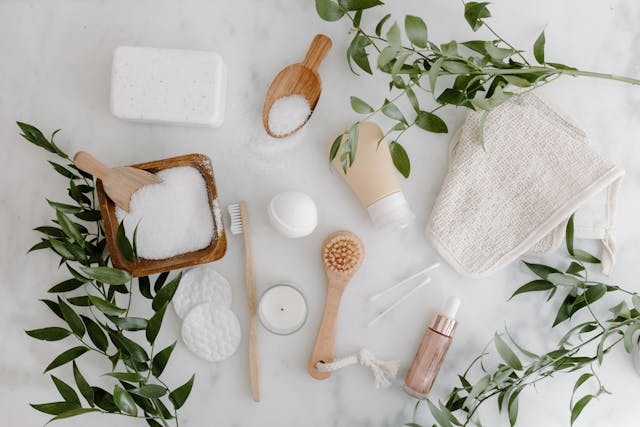The skincare aisle overflows with natural ingredients promising to hydrate and protect our skin. Two popular contenders often vying for a spot in your beauty routine are coconut butter and shea butter. While they share a creamy, similar appearance, their origins, compositions, and moisturizing effects set them apart.
Coconut Butter: Lightweight Hydration with Antibacterial Benefits
Extracted from the dried flesh of coconuts, coconut butter is a culinary staple transformed into a skincare hero. Its smooth texture results from grinding these fleshy parts into a paste that retains natural oils and nutrients. This makes it richer in medium-chain fatty acids (MCFAs), particularly lauric acid. Lauric acid isn’t just known for its moisturizing prowess; it also boasts antibacterial properties, making coconut butter a winner for those with acne-prone or sensitive skin.
Beyond lauric acid, coconut butter is packed with antioxidants and vitamins E and K. This potent combination works in harmony to nourish the skin barrier, lock in moisture, and combat dryness.
Coconut butter’s light consistency allows for easy application and quick absorption. This makes it an excellent choice for daily use on larger areas of your body or even delicate areas like the face and lips without feeling heavy or greasy. It also offers a layer of protection against environmental aggressors like pollution and free radicals, promoting long-term skin health.
Shea Butter: Deeply Nourishing and Protective
Shea butter emerges from the nuts of the shea tree, renowned for its deeply nourishing and protective qualities. Its higher stearic acid content contributes to a denser, more solid texture compared to coconut butter. This doesn’t mean it absorbs less effectively; rather, this density allows for sustained hydration that penetrates deep into the skin.
Shea butter is abundant in oleic acid alongside vitamins A and E. These nutrients work synergistically to strengthen your skin’s natural barrier while delivering intense moisture. The result? Skin feels noticeably softer, smoother, and more resilient with improved elasticity.
This richness makes shea butter ideal for targeting very dry areas like elbows, knees, or cuticles. Its protective layer prevents moisture loss and can be especially beneficial during colder months when skin tends to become drier. To maximize its benefits, warm a small amount between your fingers before application, softening the texture for smoother spreading on targeted spots.
So, Which One Is Right For You?
Choosing between coconut butter and shea butter boils down to individual skin needs and preferences:
- Normal, Combination, or Sensitive Skin: Coconut butter’s lightweight feel, quick absorption, and antibacterial properties make it a winning daily moisturizer for most skin types.
- Very Dry, Rough, or Irritated Skin: Shea butter delivers intense, long-lasting hydration with its rich texture and concentrated nutrients, making it ideal for deeply nourishing dry patches and promoting overall skin comfort.
Ultimately, both coconut butter and shea butter are valuable additions to any natural skincare routine, offering unique benefits to address diverse needs.




















